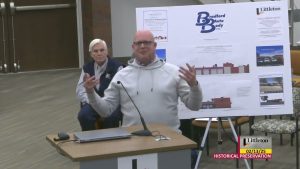Winter in Colorado can be beautiful, but it also brings harsh weather conditions that can cause significant damage to your home’s plumbing system. Frozen pipes are a common occurrence during the winter season, and they can result in a lot of costly repairs. To avoid the hassle of repairing frozen pipes, it’s best to take preventive measures before winter sets in. In this article, we will provide you with 10 essential tips to prevent freezing pipes in Colorado.
Our tips will cover various preventive measures and best practices to safeguard your home’s plumbing system. By following these tips, you can ensure that your pipes will stay clear of ice and continue to function smoothly throughout the winter season. Let’s get started!
Understanding the Risks of Frozen Pipes
Preventing frozen pipes in cold weather is crucial to avoid costly damage to your home. Frozen pipes can burst, causing flooding, property damage, and potential health hazards. In Colorado, where temperatures often drop below freezing during winter, the risk of frozen pipes is particularly high.
When water inside a pipe freezes, it expands and puts pressure on the pipe walls. This can cause the pipe to burst, leading to leaks and flooding. It is important to note that even a small crack in a pipe can result in significant water damage to your home.
In addition to the damage caused by flooding, frozen pipes can also lead to complications with your home’s plumbing system. For example, if a pipe bursts, the water supply may be disrupted, and the system may need to be shut down to prevent further damage.
Insulate Exposed Pipes
Insulating your pipes is an effective way to prevent them from freezing in cold weather. Pipes that are exposed to low temperatures, such as those in unheated basements or attics, are particularly vulnerable to freezing.
Here are some tips on how to effectively insulate your exposed pipes:
| Tip | Description |
|---|---|
| Use foam insulation | Foam insulation is easy to install and provides excellent insulation for pipes. It can be purchased at most hardware stores and is available in various sizes to fit different pipe diameters. |
| Wrap pipes with heating tape | Heating tape is an excellent option for pipes that are at risk of freezing. This type of tape can be wrapped around pipes and plugged into an electrical outlet to keep the pipes warm. |
| Add extra layers of insulation | If the temperature in your area regularly drops below freezing, consider adding extra layers of insulation to your pipes to provide additional protection. |
Remember to inspect your pipes regularly to ensure that the insulation is still intact and in good condition. If you notice any damage, repair or replace the insulation as soon as possible.
Seal Drafts and Cracks
One of the most common causes of freezing pipes is cold air penetrating your home through drafts and cracks. Sealing these areas can go a long way in preventing frozen pipes in Colorado.
Start by identifying areas where cold air may be entering your home. Common culprits are gaps around windows and doors, holes in the walls or foundation, and cracks in the basement.
Once you have identified the problem areas, use appropriate materials to seal them. For small gaps, caulking or weather-stripping may be sufficient. For larger openings, consider using foam insulation or insulation batting.
| Tips for Sealing Drafts and Cracks |
|---|
| Use a flashlight to check for drafts and cracks in poorly lit areas. |
| Check your attic for gaps around vents and chimneys. |
| Seal areas where pipes enter or exit your home. |
Remember to also pay attention to the areas around pipes. Sealing gaps and cracks around pipes can be done using expanding foam insulation or pipe insulation tape. These materials are easy to apply and can help keep cold air out.
Don’t Forget Your Attic
One often overlooked area for sealing drafts and cracks is the attic. Gaps around vents and chimneys can let cold air in and cause pipes to freeze. Be sure to check your attic for any gaps or openings and seal them using appropriate materials.
Keep a Steady Temperature
Maintaining a steady temperature inside your home is essential to preventing frozen pipes during cold weather. Fluctuations in temperature can cause water in pipes to freeze and expand, leading to leaks or burst pipes. To avoid this, we recommend:
- Keeping your home at a constant temperature of at least 55°F, even when you are away. You can use a programmable thermostat to regulate the temperature efficiently.
- Sealing any drafty areas around doors and windows to prevent cold air from entering your home. Check for cracks or gaps and use weather-stripping or caulking to seal them effectively.
- Opening cabinet doors under sinks to allow warm air to circulate around pipes. This is especially important for pipes located on exterior walls.
- Adding insulation to walls, attics, and crawl spaces to prevent heat loss and keep pipes warm.
By following these tips, you can ensure that your home’s temperature remains stable and your pipes stay protected from freezing temperatures.
Drip Faucets
During extremely cold temperatures, it is essential to maintain the flow of water through your pipes to prevent freezing. One effective way to achieve this is by dripping your faucets.
When you allow your faucets to drip slightly, this creates a constant flow of water through the pipes, reducing the chance of water freezing and expanding, which can cause pipes to crack or burst.
To implement this technique, select a few faucets throughout your home and turn them on slightly. It is advisable to choose faucets that are farthest from your main water supply, such as those in your basement or farthest from the city supply.
Remember that a small drip is sufficient to keep the water flowing. You do not need to turn on the faucet fully. Be sure to check the faucets regularly to ensure that they are still dripping and that there are no leaks.
Disconnect and Drain Outdoor Hoses
Before winter sets in, it is important to disconnect and drain all outdoor hoses to prevent the water from freezing in the hoses and potentially damaging the connected pipes. This simple step can save you from a lot of trouble and prevent costly repairs.
To properly disconnect the hoses, first, turn off the outdoor water supply and drain the remaining water from the hose. You can do this by removing the nozzle and holding the hose upright to let the water drain out. Then, coil the hose neatly and store it in a dry, sheltered place.
Use Pipe Heating Cables
Another effective way to prevent freezing pipes is to use pipe heating cables. These cables work by generating heat to keep the pipes warm and prevent freezing. Pipe heating cables are especially useful for pipes that are located in areas where insulation is not an option.
When selecting pipe heating cables, it is essential to choose the appropriate length and wattage to suit your pipes’ size and location. Additionally, installation should be carried out following the manufacturer’s instructions and by a professional if necessary.
| Benefits of Using Pipe Heating Cables |
|---|
| Prevent pipes from freezing and bursting |
| Easy to install and use |
| Can be used in areas where insulation is not an option |
Frequently Asked Questions (FAQ)
As winter approaches, homeowners in Colorado must take preventive measures to prevent freezing pipes. Here are some commonly asked questions related to preventing freezing pipes and their answers:
Q: What is the best temperature to maintain inside the home to prevent freezing pipes?
A: It is recommended to keep the temperature inside the home above 55°F, even when away from home for an extended period. This helps to prevent the pipes from freezing due to prolonged exposure to frigid temperatures.
Q: How can I insulate exposed pipes?
A: You can insulate exposed pipes by using foam pipe insulation sleeves or wrapping them with heat tape. Insulating the pipes helps to prevent them from freezing and bursting in cold weather.
Q: What should I do if my pipes freeze?
A: If you suspect that your pipes have frozen, turn off the main water supply and open all the faucets to relieve pressure. Then, use a hairdryer or heat lamp to thaw the frozen pipes slowly. Do not use a blowtorch or open flame to thaw the pipes.
Q: Can I use space heaters to keep my home warm in cold weather?
A: Yes, you can use space heaters to maintain the temperature inside your home, but it’s essential to follow safety precautions. Keep the space heater away from combustible materials, do not leave it unattended and use only heaters with built-in safety features like automatic shut-off.
Q: How often should I inspect my pipes for cracks and leaks?
A: It’s recommended to inspect your pipes for cracks and leaks at least once a year. Regular inspections can help you identify potential issues before they turn into major problems, save you money and prevent water damage inside your home.









